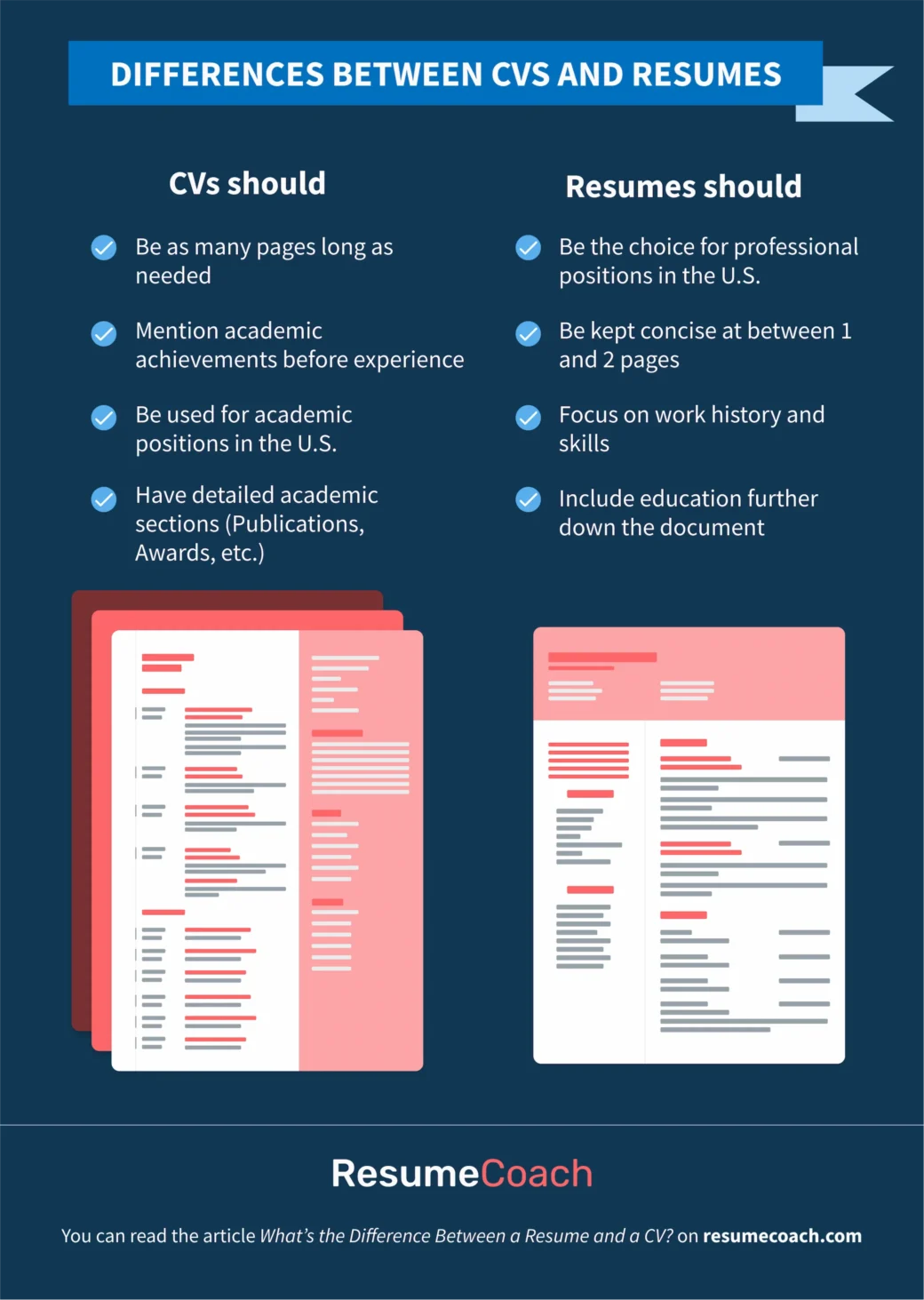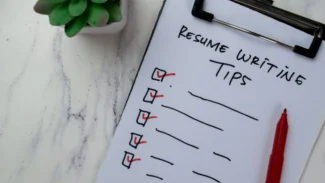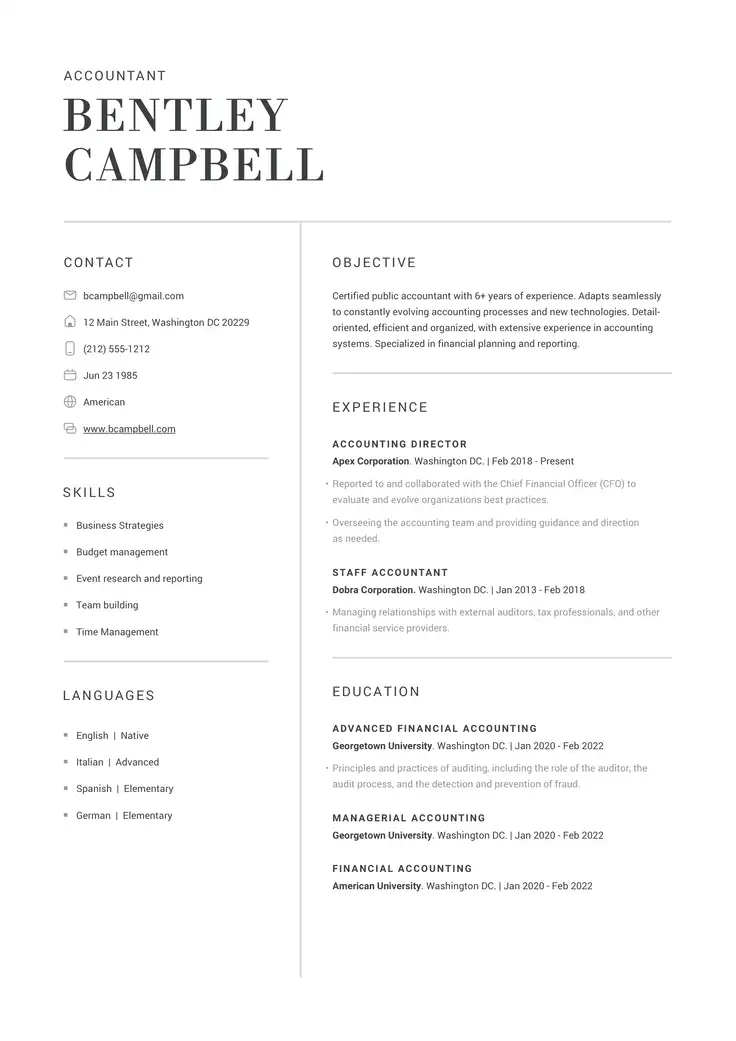If you are wondering what the difference is between a CV and a resume, you are not alone!
‘What does CV stand for?’ You might ask.
Simply put, CV is an abbreviation of Curriculum Vitae (Latin for ‘the course of one’s life’).
However, the CV meaning in terms of what the document contains is different depending on where you are in the world. When we talk about a CV, we mean a document that outlines your professional life story.
What does CV mean in America vs. the rest of the world?
- An American CV is mainly used for academic roles.
- In the UK and some other countries, a CV is the document you send to an employer when you apply for a job.
- In the US, this type of document is called a resume (French for ‘summary’).
On the other hand, a resume is more like a snappy summary – it’s derived from French and means ‘to summarize.’ So, think of it as your career’s movie trailer, giving just enough to pique interest.
Now, resumes are the go-to for most job hunts in the United States. They’re like the bread and butter of job applications, so knowing how to write an effective resume is vital.
Recruiters prefer a resume that easily showcases the skills needed for the job that they are recruiting for and would be a favorable asset for a company’s hiring manager.
Spot a job ad? Pay close attention to what they’re asking for. It’s all about giving them what they want – sometimes it’s a resume, other times a CV—knowing the difference is your secret weapon in the job application game.
-
💡 Our expert’s advice

Customizing your resume or CV for each job application is crucial. Tailoring your resume or cover letter to match the job description can help you get past the Applicant Tracking System (ATS) and catch the attention of hiring managers.
What Are the Main Differences Between Resumes and CVs?
It’s essential to know your tools in the world of job applications. Two key players in this arena are the resume and the curriculum vitae (CV).
While they might seem like interchangeable terms, they’re quite different. Let’s dive into what sets them apart.
CV main characteristics
- Academic and international flair: CVs are often used in academic circles and are the go-to document for job applications in many countries outside the United States.
- A story of your career: Think of a CV as a detailed narrative of your academic professional journey. It’s a multi-page document covering everything from your educational background to your work experience, achievements, and any accolades you’ve picked up.
- Chronological and comprehensive: CVs are typically laid out in chronological order and are meant to be extensive. They’re your academic and professional biography, showcasing the full spectrum of your academic career.
- Static yet evolving: Unlike resumes, CVs aren’t usually customized for specific job applications. They’re more of a static document but grow and evolve as your career progresses.
Resume Main Characteristics
- The US standard: The resume is the standard document for most non-academic job applications in the United States.
- Concise and job-specific: A resume is your career highlight reel. It’s a brief, usually 1-2 page summary of your most relevant professional experiences and skills, tailored to the specific job you’re eyeing.
- Customizable and dynamic: The beauty of a resume lies in its flexibility. You can (and should) tweak it for each job application, highlighting the parts of your career that make you the best fit for the position.
- Formats galore: Resumes come in various formats – chronological, functional, and combination – giving you the freedom to choose the one that best showcases your strengths.

What Is a Resume?
Your resume is more than just a document. It’s a concise, punchy summary of your professional life, tailored to catch the eye of your future employer. Think of it as your personal billboard, showcasing your skills and experiences in a neat, compelling package.
Crafting a resume is an art. It’s about distilling your professional journey into a one or two-page document that speaks directly to the needs of the job you’re eyeing. This isn’t the place for your life story.
-
💡 Our expert’s advice

A visually appealing resume can catch the recruiter’s eye and increase your chances of landing an interview. Stick to clean, professional fonts like Arial, Calibri, or Times New Roman, and use bullet points to highlight your accomplishments, skills, and responsibilities. Incorporate white space to avoid cluttering your resume.
Adding a few subtle colors in headings or dividers can make your resume stand out without going overboard. If you do use color on your resume, stick to one or two colors so as not to overwhelm the reader’s eyes.
The beauty of a resume lies in its adaptability. Unlike a CV, which is a more static and comprehensive record, a resume is a chameleon. For each job application, you tweak and tailor it, ensuring it resonates with the specific requirements of the job.
It’s about matching your skills with the employer’s needs, using their language, and hitting their key points.
Your resume should be a quick read, easy on the eyes, and packed with relevant information.
Today, approximately 75 percent of employers and 98.8 percent of Fortune 500 companies use an applicant tracking system (ATS) to streamline their hiring process.
To ensure your resume gets past these systems, use a simple design and format, avoid graphics or unusual fonts, and clearly label resume sections with bold text.
Incorporate keywords from the job posting throughout your work experience, skills, and summary sections. This strategic use of keywords can significantly improve your chances of being seen by an employer.
Make it count, make it memorable, and most importantly, make it uniquely yours.
Not sure where to start? Try our AI-powered resume builder, and be done in just a few minutes.
What are the sections of a resume?
A well-structured resume is crucial for making a strong impression on potential employers. Below is a comprehensive overview of the different sections that can be included in a resume.
1. Contact information
The contact information section is essential and should be placed at the top of the resume. It typically includes you full name, phone number, email address, city and state (optional), and LinkedIn profile or portfolio links, if applicable.
2. Target job title
A target job title lets the hiring manager know what job you are applying for. It can be effective in grabbing the attention of hiring managers.
3. Professional summary
This section provides a concise overview of your career goals, skills, and what you bring to the table. It is a summary of your professional experience tailored to the job you are applying for. It should be no more than 4 to 5 lines in the professional summary.
4. Skills
A dedicated skills section highlights both hard and soft skills relevant to the job. This can include technical skills, software proficiencies, and other competencies.
5. Professional experience
The professional experience section lists your work history in reverse chronological order. It includes job titles, company names, locations, dates of employment, and key responsibilities and achievements.
6. Education
The education section details your academic background, also in reverse chronological order. It includes degrees earned, names of institutions, and graduation dates if the graduation date is less than five years old.
7. Certifications and licenses
This section lists any relevant certifications and licenses you have obtained. It is important for roles that require specific credentials.
8. Awards and honors (Optional)
Including awards and honors can help you stand out by showcasing your achievements and recognitions.
9. Special projects (optional)
Special projects can demonstrate your initiative and ability to manage complex tasks. This section is optional but can be valuable for certain roles.
10. Professional Affiliations or Other Activities
Listing professional affiliations or memberships in relevant organizations can show your commitment to your field.
11. Publications (Optional)
If you have authored any publications, listing them can be beneficial, especially for academic or research-oriented positions.
What not to include in a resume
Avoid including unnecessary information such as photos, salary history, personal details like age or marital status, and any negative information about past employers.
What is a CV?
A CV is like a detailed roadmap of your professional and academic journey. It’s not just a brief showcase of your work history, like a resume. Instead, a CV is a comprehensive account of your entire career, packed with all the details of your academic triumphs and professional milestones.
Think of a CV as your professional diary, where every chapter tells a story of your growth and achievements. It’s particularly favored in academia, research, and scientific fields, where the depth of your knowledge, research, publications, and educational background are as crucial as your work experience.
Here, your CV becomes a canvas to paint a full picture of your scholarly pursuits and contributions.
Structure-wise, a CV is a meticulously organized document that presents your career chronology in full glory. It’s a living document that grows alongside your career.
Each new degree, research project, publication, or academic endeavor adds another feather to your cap, making your CV richer and more robust. It’s not just a record; it’s a testament to your professional journey.
In many places around the globe, the CV isn’t just for academics. It’s the go-to document for all sorts of job applications, serving a similar purpose as the resume does in the United States.
The CV has its unique flavor – comprehensive and detailed. So, when you’re stepping into the international job market, understanding this distinction is key. Your CV is your ambassador, representing the full spectrum of your professional life.
What are the sections of a CV?
Here are the essential sections of a CV:
1. Header
The header includes your full name and contact information such as phone number, email address, and LinkedIn profile or portfolio website link with your academic or research projects.
This section ensures that potential employers can easily reach you.
2. Personal profile
A personal profile is a brief statement that highlights your career goals and what you aim to achieve in the position you are applying for. This section provides a snapshot of your professional aspirations and sets the tone for the rest of the CV.
3. Education
The education section lists your academic qualifications in reverse chronological order, including the names of the institutions attended and degrees obtained. This section demonstrates your academic background and qualifications.
4. Professional Experience
This section details your work history, including job titles, employers, dates of employment, and key responsibilities or achievements. It is crucial to tailor this section to highlight experiences relevant to the job you are applying for.
5. Skills
List specific skills that are relevant to the job, such as technical skills, language proficiency, or other competencies that have not been covered in other sections. This section showcases your abilities and how they align with the job requirements.
6. Awards and certifications
Include any awards, honors, or certifications you have received, whether academic or professional. This section highlights your achievements and recognitions.
7. Publications
If you have published academic papers, articles, or books, list them in this section using a standard citation format. This section is particularly important for academic and research positions.
8. Professional affiliations and memberships
List any professional organizations or groups you are a member of, including any positions held within these organizations. This section demonstrates your engagement with the professional community.
Additional sections
Depending on the job and your background, you may include other sections such as:
- Languages: List any languages you speak and your proficiency level.
- Conferences, Seminars, Training, and Workshops: Detail any conferences, seminars, training, or workshops you have attended and/or presented your research at.
- Courses Taught: Provide details on courses that you have taught.
- Projects: Include significant projects you have worked on, especially those relevant to the job.
- Dissertation Abstract: If applicable, include an abstract of your dissertation.
- Statement of Research: Often used for academic positions, this outlines your research interests and plans.
By including these sections, you can create a comprehensive and compelling CV that effectively showcases your qualifications and experiences.
FAQs
A resume is like your career’s highlight reel: snappy and to the point, usually stretching up to two pages. It’s all about showcasing your skills and experiences that are just right for the job you’re eyeing.
On the flip side, a CV (Curriculum Vitae) is more like an epic saga of your professional life. It’s detailed and comprehensive and covers everything from your academic accomplishments to your professional experiences.
It’s the go-to for academic roles, research gigs, and high-flying professional posts, especially outside the good ol’ USA.
No. Pull out your resume for most job applications, especially if you’re hunting in the corporate jungle, non-profits, or the public sector stateside. It’s your best bet when you need to be brief yet brilliant about your experience for a specific role.
But, if you’re aiming for academia, research, or top-tier executive positions, or if you’re stepping into the job market beyond the U.S., a CV is your golden ticket. It’s also your ally for academic grants and fellowships.
No, you cannot use the same document for all of your job applications. Each document needs to adapt to the job description.
Your resume should be tailored for each job application. Highlight what makes you perfect for that particular role.
As for your CV, while it’s a broader canvas, you still want to paint the parts of your academic and professional life that resonate most with the position or grant you’re after. Tailoring your approach is key – it’s what could swing doors wide open for you.
Related Posts




